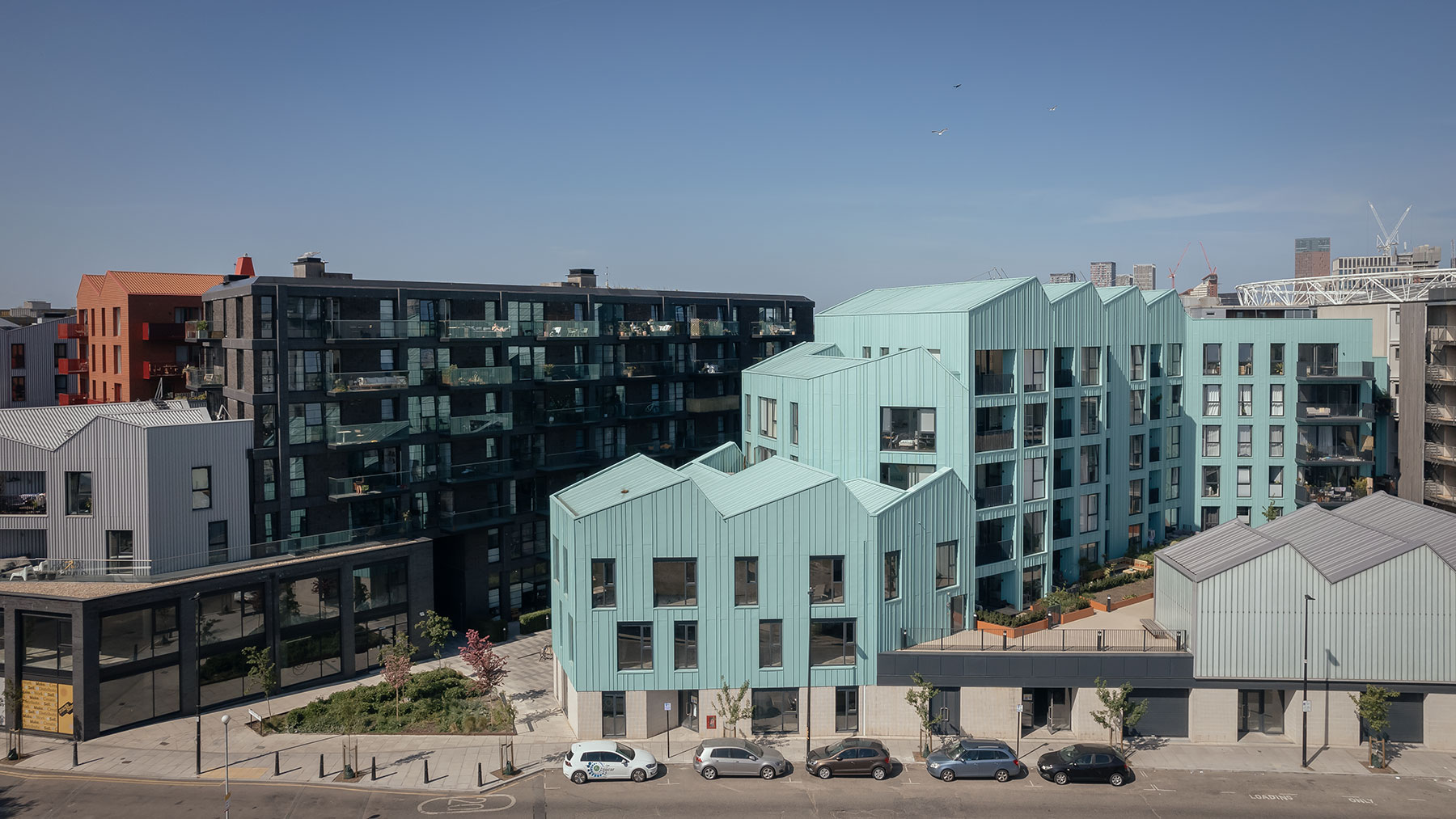dRMM’s Wick Lane masterplan integrates homes, industrial, and creative spaces into a vibrant, co-located community in East London, drawing on the area’s industrial heritage and blending contemporary needs with historical character.
Photos
Jim Stephenson
dRMM has completed a mixed-use neighbourhood at Wick Lane, a project that challenges conventional co-location design. The masterplan, set in the heart of Hackney Wick and Fish Island in East London, combines 175 homes and 2,250 square metres of commercial space within a context that celebrates its industrial and creative roots.
According to the architects, Wick Lane rejects the simplistic “beds above sheds” model, instead creating a thoughtful link between residential and industrial uses. The project is a response to the London Legacy Development Corporation’s brief to deliver housing while safeguarding employment space and Strategic Industrial Land (SIL). dRMM’s approach weaves the area’s rich history with a forward-looking vision, resulting in a community that embraces diversity in use and design.
Site section.
Taking cues from the site’s industrial past, Wick Lane’s architecture reflects 200 years of manufacturing heritage. Victorian brick buildings, mid-century modernist factories, and corrugated metal structures inspired a palette of materials that includes red and black brick, cast glass, ribbed blockwork, and sinusoidal metal. Each building is treated with a single material applied to roofs, walls, and soffits, maintaining a cohesive yet varied aesthetic.
Situated between the Fish Island conservation area to the north and SIL to the south, Wick Lane occupies a unique position in Hackney Wick’s diverse urban realm. The site is bounded by Joseph Bazalgette’s 19th-century sewers and the Greenway, an elevated route connecting Victoria Park to the Olympic Park. The constraints of a Thames Water sewer head informed the site layout, ensuring open access while creating a flow of pedestrian and cycle routes.
Tradestars, a new enterprise managing the industrial spaces, has curated a tenant mix ranging from tattoo and hair salons to textile studios and bike workshops. Interior fit-outs by Sophie Franks Designs emphasize flexibility and functionality, ensuring the spaces adapt to varied creative and light-industrial needs.
“This is the first time I’ve had an office outside my flat, and it’s been good to be part of the growing community,” said Seb Michalski, Owner of MerchHub, a custom clothing and merchandise company that serves businesses and brands. “There are new businesses moving in all the time – we learn from each other and help each other out. It also makes me work harder, seeing other people’s businesses grow. Our street frontage has helped with getting clients too, as people walk past and pop in to see what we’re doing.”
Within the masterplan, commercial spaces act as a buffer between homes and SIL. Podium gardens and landscaped public spaces, designed by Grant Associates, soften the transitions while distinctive public realms known as Wick Walk and The Yard foster community interaction establishing a connection to the Greenway. Residents’ pocket gardens and dual-aspect apartments maximise daylight and create serene environments amidst the urban energy.
Along with its architecture, the scheme’s landscaping reflects the industrial origins of the area, with soft planted borders and new pedestrian routes, including a revitalized connection to the Queen Elizabeth Olympic Park, enhancing accessibility.
“Wick Lane is a wonderful reimagining of the spirit of Hackney Wick and Fish Island; an idealised vision of its proud industrial and creative heritage,” said Philip Marsh, director at dRMM. “We are all incredibly proud of what we have achieved here, successfully delivering an exemplary scheme that accords with the ambitions of the London Legacy Development Corporation.”
David Pelle, land and planning director at Taylor Wimpey added: “It was a pleasure working with dRMM, who enabled Taylor Wimpey to unlock this technically challenging site. They delivered us an exemplar design that became one of the most interesting and successful mixed -use schemes in this part of east London.”
Credits
Client
Taylor Wimpey London
Architect
dRMM
Planning authority
London Legacy Development Corporation
Main contractor
Taylor Wimpey London
Structural engineer
AECOM
Executive structural engineer
Clarke Nicholls Marcel
Fire engineer
AECOM
Mechanical, electrical and plumbing (planning)
Pinnacle ESP
Mechanical, electrical and plumbing (executive)
Venables Associates
Landscape architect (planning)
Grant Associates
Landscape architect (executive)
JFA
Energy and sustainability consultant
Environmental Economics
Heritage consultants
Tibbalds
Cost consultant
Martin Arnold
Daylight/Sunlight
Anstey Horne
Workspace fitout
Tradestars and Sophie Franks Design
Additional images
Source: Architecture Today









